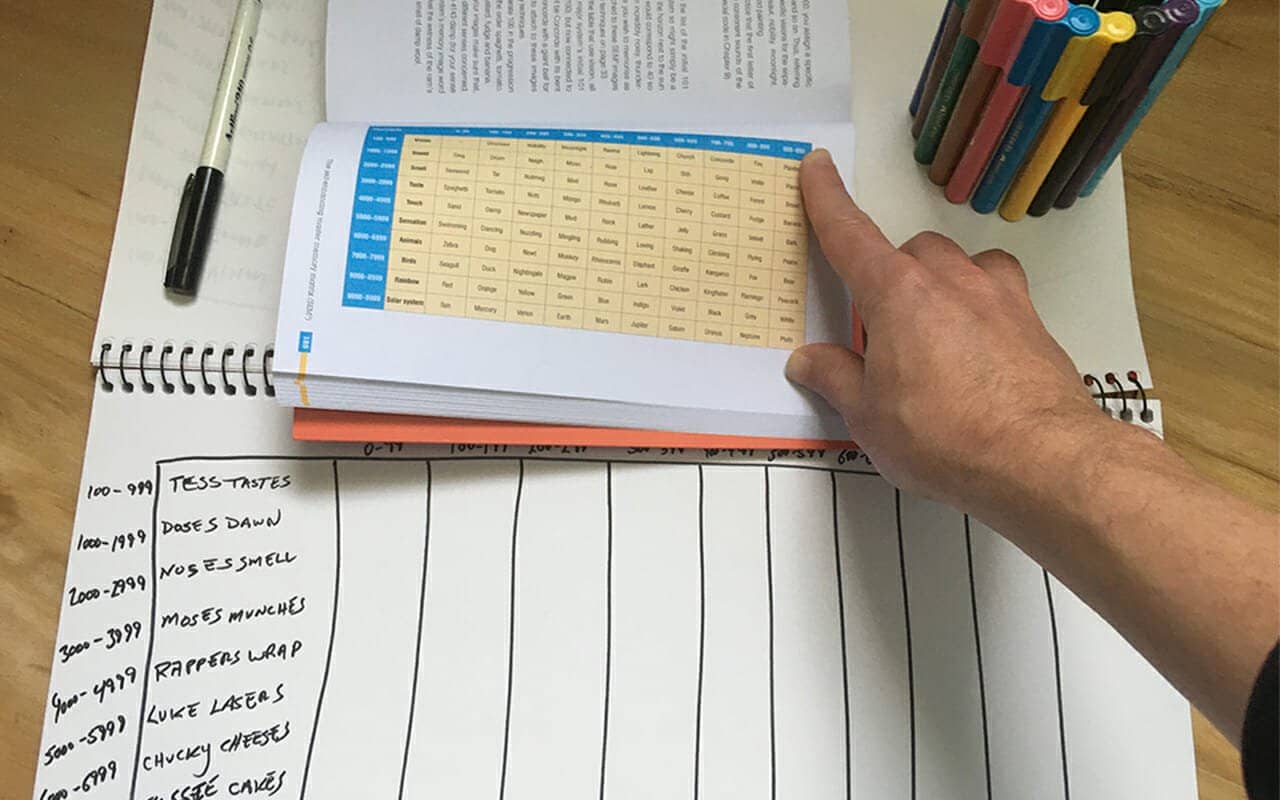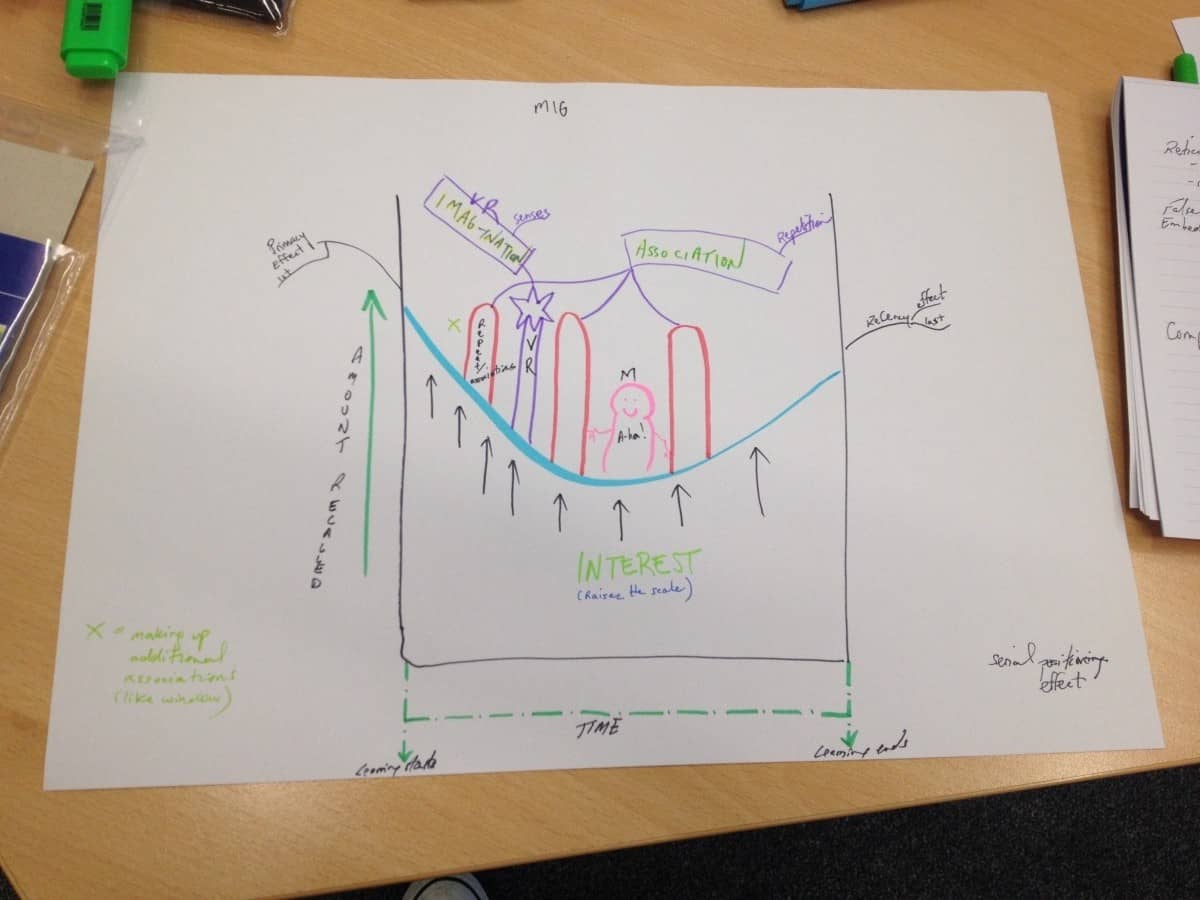
“SEM3,” as some fans call it, wasn’t entirely new.
In fact, it’s based on ancient principles that have been arranged in a different way.
If you’re interested in using the Self-Enhancing Memory Master Matrix, but aren’t sure how it works, this post will help you decide.
You’ll need to commit certain information to memory in order to use it.
But as we’ll see, there might be a way around doing that, if not a completely alternative method.
Ready to dive into SEM3?
Let’s get started!
What Is the Self-Enhancing Memory Master Matrix?
I first encountered what some of us call “Sem Cubed” in Tony Buzan’s The Memory Book.
The core idea is that you combine 100 images based on the Major System with a number of categories Buzan listed in this book. You can then place these associations in a Memory Palace to help you recall information.
This means that to even get started, Buzan places a fairly heavy burden on you.
Then again, he wrote The Memory Book during a time when digital amnesia hadn’t made critical thinking and problem solving harder for all of us.
In any case, to use SEM3, you first need decent familiarity with the Major. It’s an association system for numbers that looks like this:
0 = soft c, s or z
1 = d, t
2 = n
3 = m
4 = r
5 = l
6 = ch, j or sh
7 = hard c, g or k
8 = f or v
9 = b or p
There are other variations (particularly in other languages), but most English, French and German speakers use an arrangement close to this number-consonant arrangement.
Using the Major to build words usually leads to what we call a PAO System, or some variation on this special mnemonic device. You wind up with 100 words based on adding vowels to the consonants listed in the Major. For example, my image for 70 is my aunt Cassie (7 = hard c, 0 = s).
Once you have a system like this, the SEM3 approach helps you reproduce each image multiple times by adding multi-sensory associations that indicate another number. It’s basically a means of reusing a Memory Palace, but applied to your number system.
Another way to think about Buzan’s suggestion is that you’re developing a grid of combinable mnemonic images.
It’s kind confusing, so let’s dig a bit deeper.

How the SEM3 Uses the Major System to Improve Your Memory
Once you have the Major System optimized, it’s time to amplify it using sensations, concepts and images.
Tony Buzan used a number of categories based on the thousands, which you then mix and match with your core images.
Buzan used the acronym, SMASHIN’ SCOPE as a means of improving elaborative rehearsal when practicing active recall.
- Senses
- Movement
- Association
- Sexuality
- Humor
- Imagination
- Number
- Symbolism
- Color
- Order
- Positive images
- Exaggeration
When you use the Major, any time you choose a word, like Cassie for 70, you can reuse it to memorize something else.
In other words, rather than coming up with a new word for 700, I can add a feature indicated by the Self-Enhancing Memory Master Matrix.
In Buzan’s version of the system, I would see my aunt Cassie flying on a Concorde. If the number was 7000, it would be Cassie interacting with a Kingfisher bird.
Personally, I find some of his categories confusing. In his example of the SEM3, he has touch and sensation as separate units of association. What’s the difference?
How Does the SEM3 Compare to Traditional Memorization Techniques?
I knew Tony Buzan myself and believe he wanted to stimulate memory enthusiasts to make the art of memory their own.
In that respect, working up your own version of SEM3 will help you master your memory, even if you don’t wind up using it.
I’ve also enjoyed coming up with my own solutions. I knew Buzan and learned to draw charts and diagrams while modifying them directly from him at a ThinkBuzan event. I did that with his “Most Important Graph In the World” for spaced repetition and have never forgotten it as a result.

To make SEM3 more “Magnetic,” I’ve changed the categories so that they more closely match the Major as I use it. That way, I can develop my well-worn categories without having to rebuild the wheel.
Ultimately, it’s not so much about how this approach compares to the countless other memory techniques out there. It’s about how you explore and experiment with it.
Should You Use Tony Buzan’s SEM3?
I believe it’s well worth exploring, yes.
If nothing else, working your own Self-Enhancing Memory Master Matrix will help you understand the concept of “the field,” discussed by Hugh of St. Victor:
And you’ll have an easier time understanding some of the suggestions made by the great memory master Giordano Bruno.
So although there are much more refined approaches available these days (such as my Magnetic SRS in the MMM Masterclass), I wouldn’t have been able to grow my skills without at least exploring SEM3 first.
My ultimate advice?
When you dive into developing your own Self-Enhancing Memory Master Matrix, spend a good 90-days with it. It’s hard for the brain to really learn a new skill without that basic amount of deliberate practice.
And it you need more help with your memory, please sign up for my free memory improvement course:
Although not as complicated as SEM3, this robust learning experience will give you much faster and more direct access to the most powerful memory techniques of all in one clear and direct package.
So what do you think?
Are you ready to start exploring the SEM3? Or does it still strike you as too complex?
As I hope to to have imparted, just trying to use this memory technique is itself self-enhancing.
But there’s no shame in it if you find the approach too complicated. If you’d like a simpler system to start with, I suggest the number rhyme system.
It’s a lot of fun and I still use it myself for certain learning goals. But I don’t treat any technique as a “total learning technique,” the way Buzan suggested.
And that’s ultimately the ticket:
Know your goals and find the set of learning techniques that will help you get there. It could be the Major Memory System, SEM3 or something even more flexible, like the Magnetic Memory Method. I work so hard sharing my particular approach precisely because it’s about promoting all possible learning approaches and helping you find the right mix.
And please always remember, the simplest formula is also the most powerful:
Take action, get results.
Related Posts
- Tap The Mind Of A 10-Year Old Memory Palace Master
Alicia Crosby talks to us about how she memorized all of Shakespeare's plays in historical…
- 7 Memory Hacks That Simply Work
The best memory hacks help you rapidly remember anything. This list gives you the best…
- Brain Athlete: Does This Free Memory App Work?
The Brain Athlete App is perfect for training as you work on using Memory Palaces…





